 Emily’s Blog
Emily’s Blog- Sunset Beach Tai Chi July 22, 2024
- Coffee with Abu… July 22, 2024
- Rumi Latte in Beverly Hills July 22, 2024
- Judging a Burmese TedTalk July 22, 2024
- Mystical Tajik Cafe in Beverly Hills July 21, 2024
- Hollywood: Brown Film Festival July 21, 2024
- New Play Premiere in Burma July 21, 2024
- Bhutan Meets Malibu & Mulholland July 21, 2024
- Tricycle Bliss July 21, 2024
- Kung Fu Panda July 21, 2024
Category Archives: Blog
Oman-Uzbekistan…

Exploring Uzbekistan (Photo: Emily O'Dell)
Posted in Blog
Comments Off on Oman-Uzbekistan…
Lions in the Balance…

Exploring Tanzania (Photo: Robert O'Dell)
Posted in Blog
Comments Off on Lions in the Balance…
Phone Home…
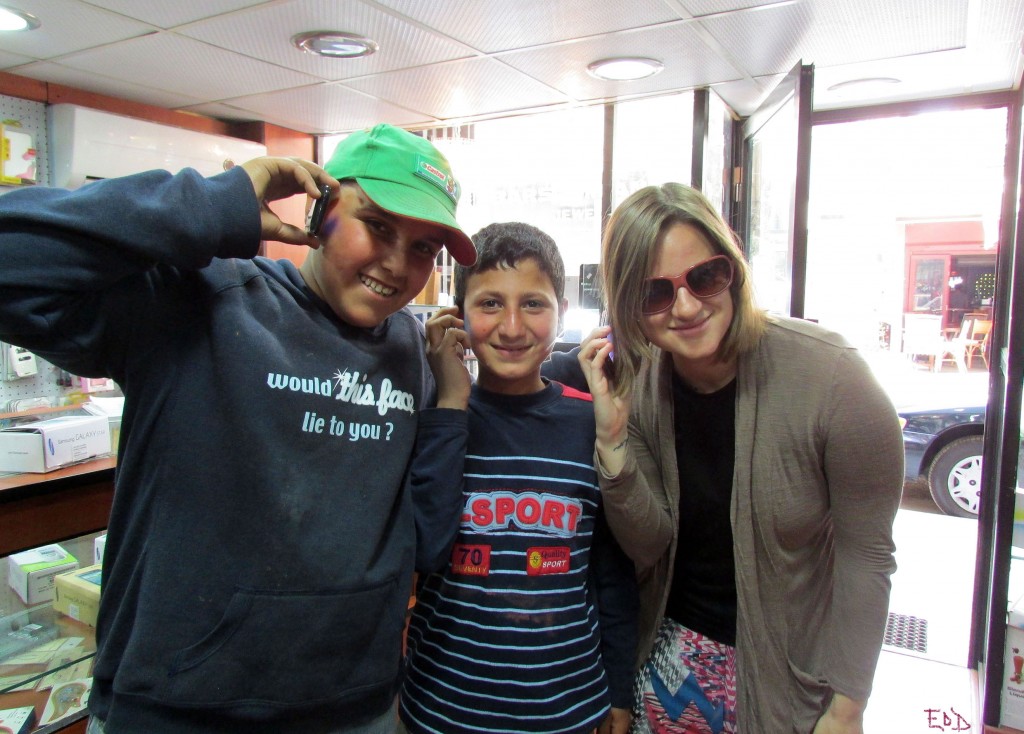
With Syrian refugee friends in Beirut (Photo: Emily O'Dell)
Posted in Blog
Comments Off on Phone Home…
Oman Air…

Come to the Sultanate of Oman
Posted in Blog
Comments Off on Oman Air…
Astrolabe in Arabia…
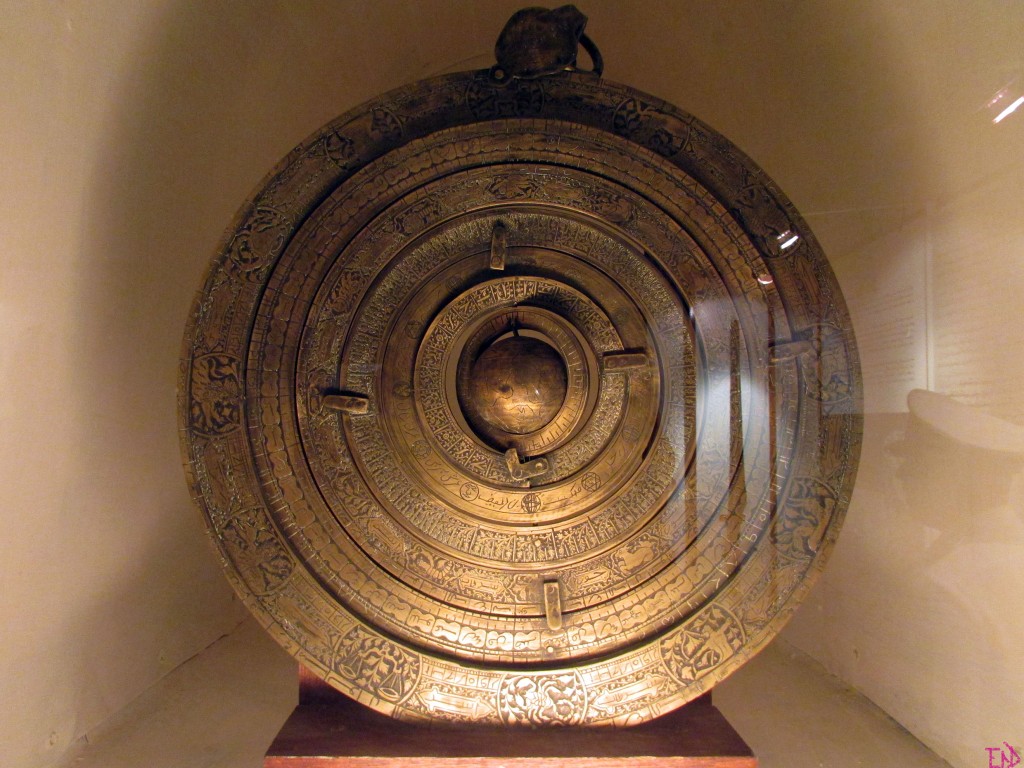
Exploring Oman (Photo: Emily O'Dell)
Posted in Blog
Comments Off on Astrolabe in Arabia…
Postcard from Oman…
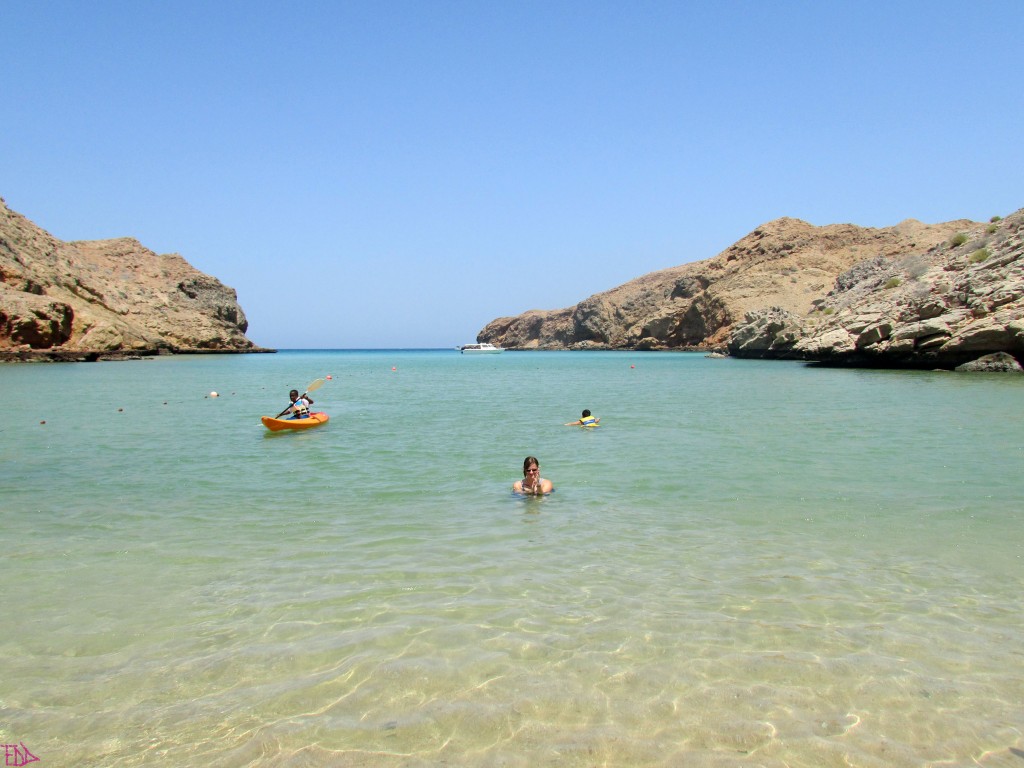
Exploring Oman (Photo: Emily O'Dell)
Posted in Blog
Comments Off on Postcard from Oman…
Reflecting on the Past…
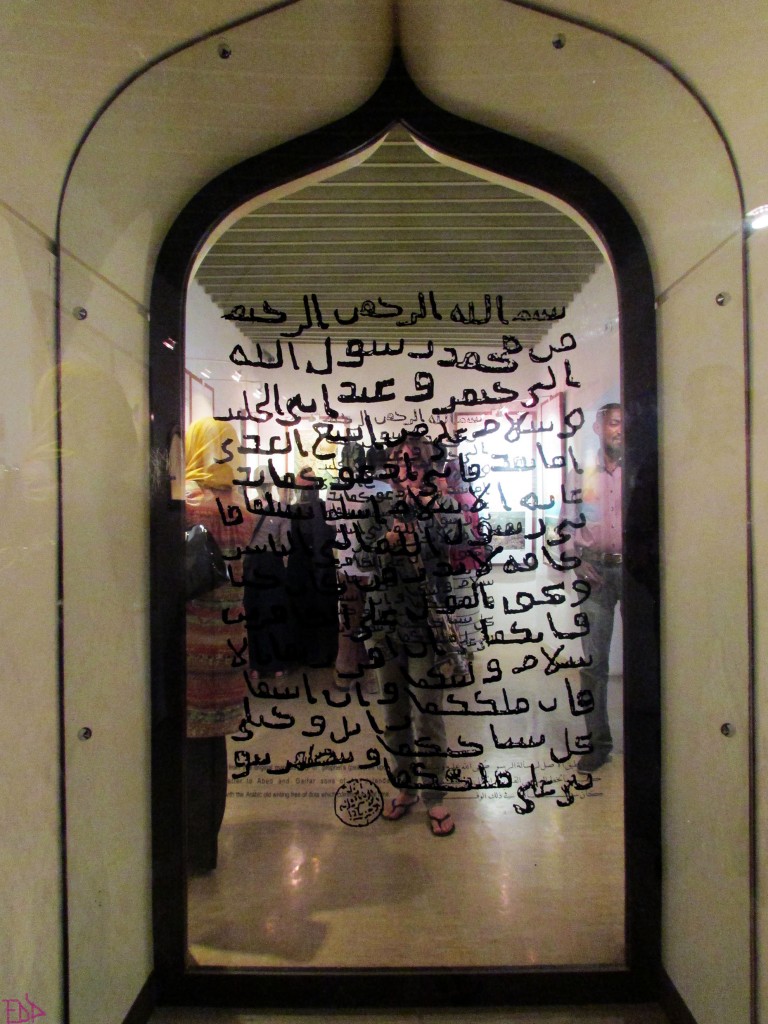
Exploring Muscat (Photo: Emily O'Dell)
Posted in Blog
Comments Off on Reflecting on the Past…
Sufism in Hungary…

Exploring Sufism in Hungary (Photo: Emily O'Dell)
Gul Baba (whose name means “Father of Roses”) was a beloved companion of Sultan Suleiman the Magnificent. Though the circumstances of Gul Baba’s death are open to debate, he died in 1541 after the Ottoman capture of Buda. His tomb is one of the few traces left of the Ottoman presence in Budapest today. Little did I know when I arrived in Budapest from Bratislava how difficult it would be to find Gul Baba’s shrine. But getting lost on the way, it turned out, was part of the fun.
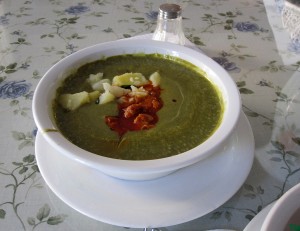
Home-style cooking (Photo: Emily O'Dell)
After fueling up on green pea soup, I followed the directions of the cafe owners–who told me that the shrine of this beloved Sufi “patron saint of the city” wasn’t far away. When I reached the base of Mecset utca (Mosque Street) on Rose Hill, I took a deep breath before starting the steep climb to see the sacred Sufi shrine of Budapest.
As I hiked up the cobblestone hill–past elegant villas with roses tumbling from their windowsills–there wasn’t a single tourist in sight. When I arrived at the small courtyard containing his stone shrine and a small rose garden, the only one there to greet me was a statue of Gul Baba himself–with a rose tucked inside his turban. Nearby the shrine, I spotted “Gul Baba Cafe.”
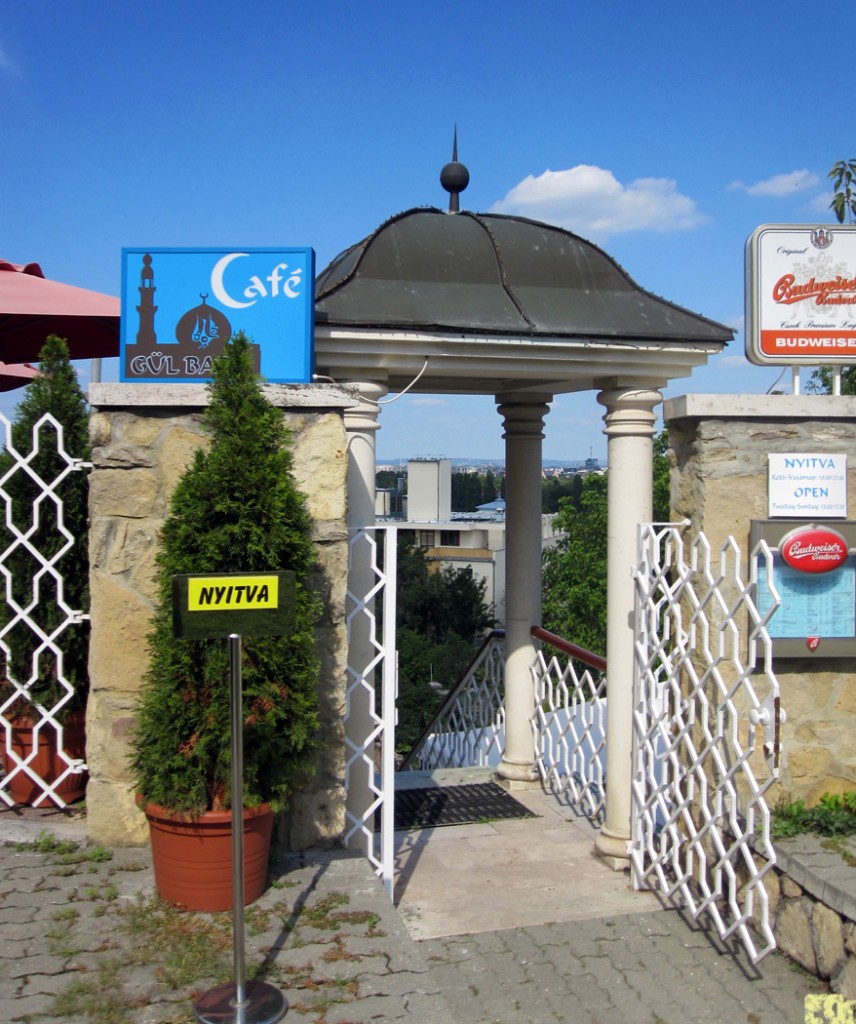
Sufi shrine cafe (Photo: Emily O'Dell)
As I took off my shoes to step inside Gul Baba’s silent octagonal shrine (türbe), I slowly inhaled the sweet fragrance saturating the room from fresh roses placed in his tomb. The colorful prayer rugs and Arabic calligraphy reminded me of the countless Sufi shrines I had visited in Turkey.

Inside Gul Baba's shrine (Photo: Emily O'Dell)
While I was taking photos, a man who was speaking Hungarian and wearing a knitted skullcap entered the shrine with his friend to offer a prayer. After he took some photographs of his own, he approached me to ask if I was from Turkey. Surprised that I was from America, he invited me to join the Hungarian Islamic Community that night for a Ramadan feast–since he was the imam of the local mosque. As he told me about the practice of Islam and Sufism in Hungary, I learned that a number of Hungarian Muslims are involved in charity work around the world–including Sudan.
Peaceful memories forged from my exploration of Islamic history and practice in Budapest contrast drastically with the images on my screen today of Muslim refugees in Hungary being treated worse than prisoners. Having spent so much time with young Syrian refugees on the streets and in the refugee camps of Lebanon, I’m disturbed to see traumatized Syrian refugees having to contend with the violence of Islamophobia, xenophobia, and racism in Europe. I can only hope that the refugees in Hungary find safe passage soon to a new chapter in their lives so they can begin to heal not only from the physical and mental wounds of war, but also the emotional wounds of their inhumane treatment in Europe.

Fountain in Gul Baba's rose garden (Photo: Emily O'Dell)
Posted in Blog
Comments Off on Sufism in Hungary…
12 Days in Oman…
I’ve been very fortunate to travel far and wide, but my favorite place in the world is the country I currently call home–the Sultanate of Oman. Here’s a video that captures some of Oman’s endless beauty…
Posted in Blog
Comments Off on 12 Days in Oman…
Taiwan in Oman…
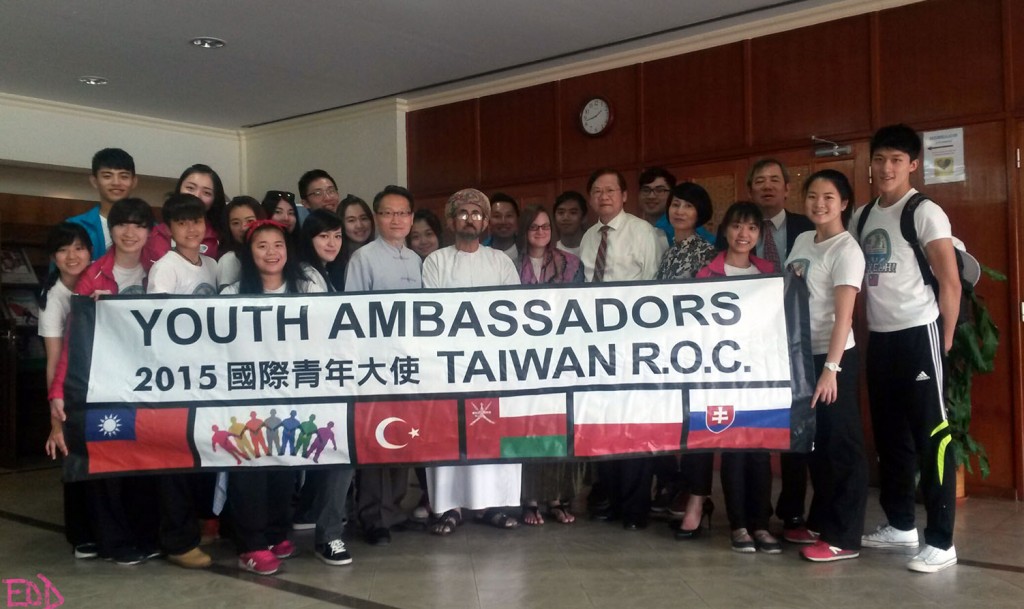
Taiwanese diplomacy in Oman (Photo: Emily O'Dell)
Posted in Blog
Comments Off on Taiwan in Oman…
بید مجنون
Here’s a scene from The Willow Tree, an Iranian film (with a blind protagonist) that plays like a modern Sufi parable. I included this soulful film by Majid Majidi in my new article, “From Leprosy to The Willow Tree: Decoding Disability & Islamic Spirituality in Iranian Film.”
Posted in Blog
Comments Off on بید مجنون
طعم گيلاس
In this video, A. O. Scott reviews the Iranian film A Taste of Cherry — which traces a middle-aged man’s quest to find someone to bury him after he commits suicide. I included this film by Abbas Kiarostami in my new article, “From Leprosy to The Willow Tree: Decoding Disability & Islamic Spirituality in Iranian Film,” for its unusual and compelling meditation on depression and suicide…
Posted in Blog
Comments Off on طعم گيلاس
حوض نقاشی
Here are some (dubbed) scenes from the Iranian film The Painting Pool. I included this film in my new article, “From Leprosy to The Willow Tree: Decoding Disability & Islamic Spirituality in Iranian Film,” because it tells the story of two parents with intellectual disabilities raising a son…
Posted in Blog
Comments Off on حوض نقاشی
خانه سیاه است
Here are some scenes from the Iranian documentary film خانه سیاه است (The House is Black) — which was filmed in a leper colony. I included this groundbreaking film, directed by female poet Forough Farrokhzad, in my new article, “From Leprosy to The Willow Tree: Decoding Disability & Islamic Spirituality in Iranian Film.”
Posted in Blog
Comments Off on خانه سیاه است